If it’s your first time looking for a violin and you have little to no information about them in general, you should expect confusion, bewilderment, and tests to your patience as you look through your options. This often applies to newbies who are interested in learning to play the instrument. Additionally, you could be looking to gift someone a violin.
At the end of it all, you still may end up disappointed and frustrated with your purchase. However, this is all avoidable if you have the right information on how to choose a violin. This is the information we have collated below for your convenience. What’s left is for you to read, take some notes, and you’ll find that you easily breeze through the selection process.
There are too many violin options in the market, which can seem overwhelming to potential buyers. However, you can only select and buy one based on merit. This means that it needs to fulfill the needs of the buyer and user. Worth mentioning is that there are different types of needs that you should cater to with your purchase. One example is the playing needs of the potential user.
Of course, the needs of a beginner differ from those of a professional and even an intermediate violinist. There are also other elements such as size that may affect playability. Financial needs are also a matter of concern where the instrument should at least be in your budget range. You can learn all about these considerations and more in the section below.
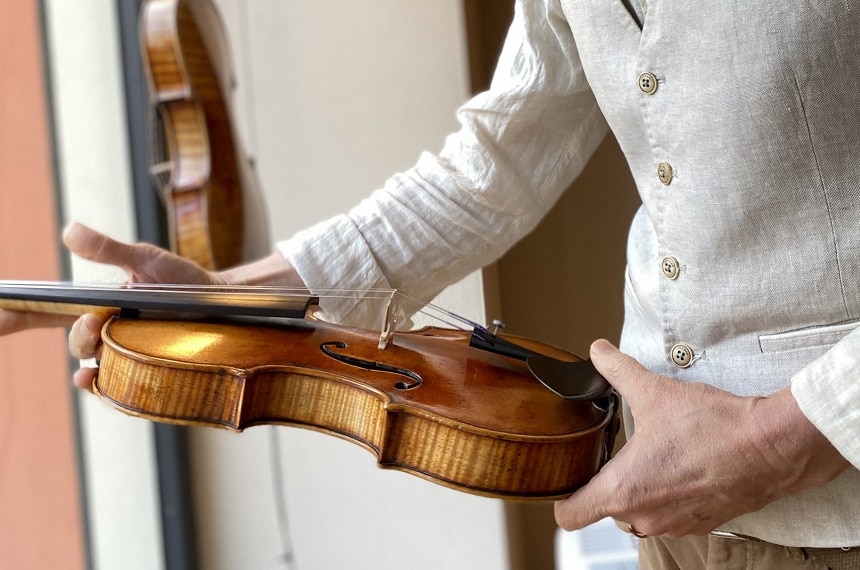
While looking at the violins in the market, it’s not uncommon to see them described as for beginners, for intermediate players, or professionals. Other popular terms used to describe violins include “for advanced players” or “for master violinists.”
Worth mentioning is that there isn’t a set standard for categorizing each violin in the market. As such, it is left to the discretion of the luthier, manufacturer, or the vendor selling you the instrument to decide which category is perfect for the violin. However, they look at specific markers and general guidelines before putting the violin in one category or the other.
Knowing about said guidelines can keep you from overpaying or having the wool drawn over your eyes during the purchase. So here are the different categories:
By their very nature, beginner instruments are meant to attract potential players and encourage them to learn to play the instrument. However, the one thing that’s guaranteed to scare them away is a big price tag. This is especially true for potential violinists who’re not sure they’ll stick with the instrument in the long run. As such, manufacturers do everything in their power to bring the cost of making the instrument down so they can sell it to beginners for cheap while still making a profit.
This leads to certain characteristics that are shared in almost all beginner violins. One example is that they use lower-quality wood in their construction which is not a surprise since wood can get very pricey. Additionally, these violins tend to feature less handwork, whether it’s in the carving, assembly, or the instrument’s finishing.
Labor and the skills needed to work a violin perfectly are expensive. As such, the less handwork needed, the less expensive the instrument. Also, you may find one or two plastic components on the instrument. This is attributed to the high price of wood and the skills needed to shape it by hand. As such, if the tuning peg or chin rest is made of plastic, it is likely made for students and beginners.
Due to the cost savings, you can get one of these violins for between $100 and $800.
Most people buy an intermediate violin after a brief stint of owning a beginner instrument. This decision typically comes after they realize they like playing the instrument or they have a knack for it and want to keep at it. Unfortunately, due to the components used, beginner violins don’t have the best sound.
Intermediate violins, on the other hand, have better components and, therefore, better sound. They thus give you the option of getting a better instrument without spending too much money. Also, sometimes beginners who are sure they’ll stick with the instrument buy an intermediate option, so they don’t have to upgrade shortly after their first violin purchase.
Professional violins feature the best construction in terms of quality. First, they’re made from high-quality wood, which has to be cold-grown and slow dried before the luthier gets to work. Also, they need to be handcrafted by master luthiers. This applies to all processes used to make the instrument, including carving, assembly, and even finishing the violin. Let’s not forget that apart from the wood, other high-quality materials are used, for example, the strings. Ultimately, these factors are bound to raise the instrument’s price, which is why you can find some options priced at thousands of dollars.
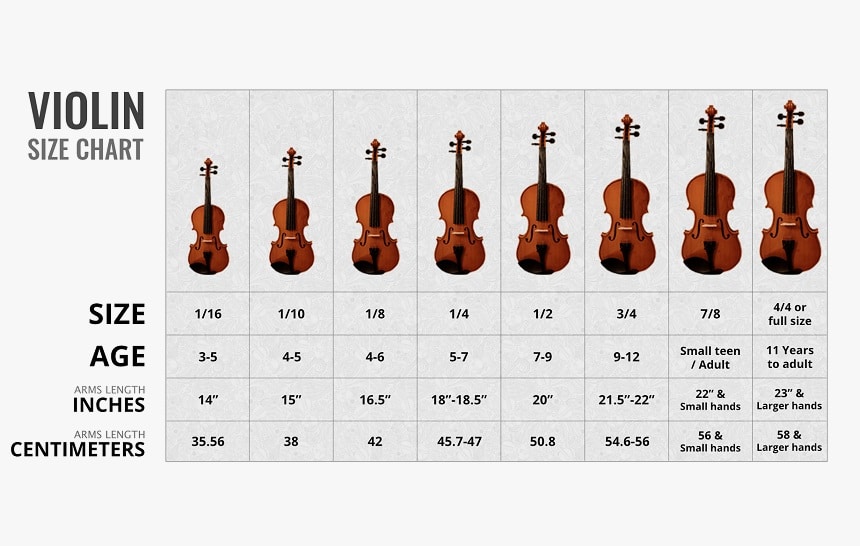
Notably, picking the wrong size can create problems with the violinists playing technique and even lead to neck, back, and arm injuries. As such, you should know how to pick the right violin size before your purchase. Start by measuring the user’s left hand before selecting the instrument to purchase. We explain how to measure a violin and how to choose the right size for you in this guide.
Also worth mentioning is that you’ll have to pick one option between an acoustic or an electric violin. The most obvious distinction between the two violins is that the acoustic option has a soundboard while the electric doesn’t. It’s possible to add electric pickups to an acoustic violin. However, if you want to amplify the sound, it’s better to use an electric violin with built-in pickups.
Also, expect a compact solid body on an electric violin. One reason for this is you don’t want resonance from a soundboard being picked up. As such, a body resembling the design of an acoustic violin would be pointless. That said, the minimalist design also helps keep the weight down.
Of course, if a player is using the electric variation of the device, they can tweak and enhance the sound to fit their needs. The electric violin is also preferred by jazz and rock musicians. Notably, Yamaha remains one of the most popular brands where electric music instruments are concerned, and their SV-200 Electric Violin offering is one reason why. It features built-in EQ control and a versatile sound to play around with.
As for the acoustic option, the tones tend to be warm, well-rounded, and they feature well in classical music. Ultimately, it’s up to violinists to decide which of the two options they like, although that may also be informed by their music preferences. That said, there shouldn’t be any major hiccups while transitioning from acoustic to electric and vice versa since the two are fairly similar.
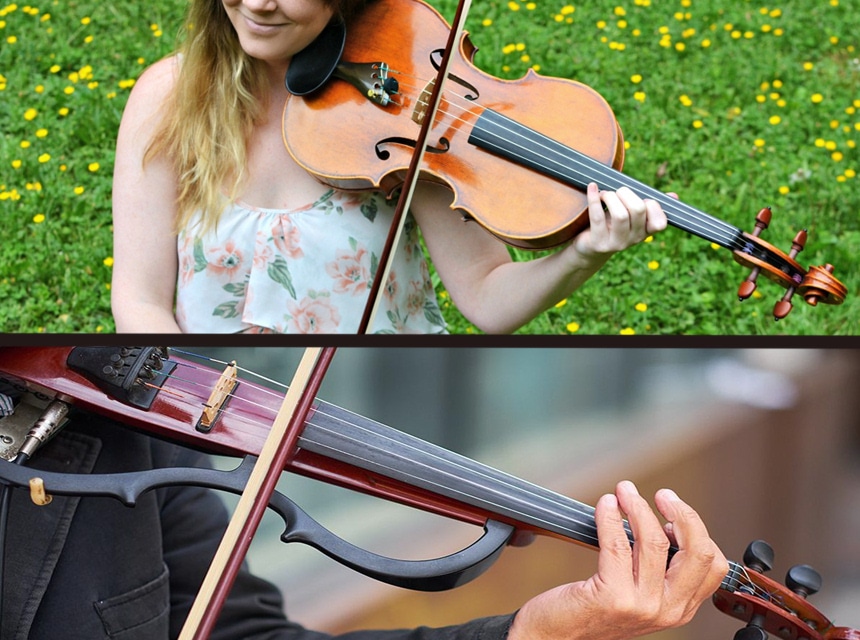
Even if you’re buying a beginner violin, there are some markers of quality materials and craftsmanship that you should look out for. That said, you should look at all the violin components individually, as each has a significant impact on the sound quality.
First, check the neck of the violin. Ideally, it should be a comfortable fit for your hands. Being too thick or too thin shows shoddy workmanship and keeps you from being comfortable while you play. Another component of the violin where size matters is the bridge. Notably, a thick bridge dampens the sound of the violin. There may also be problems with either the height of the bridge or the spacing between the strings.
Next, you check how the bridge is fitted onto the violin. It should either be upright or slanted slightly backward. Any other orientation spells trouble when you’re trying to play the instrument. Of course, for the bridge to be upright, the included feet should be a perfect fit for the body of the violin below it.
On the opposite end of the instrument, you can check the pegs.
The strings are another area where you can get taken advantage of if you don’t know what to look for. There are decent beginner brands for strings, such as D’Addario Prelude or Dogal Red Label. However, there are also a lot of fake offerings from varying manufacturers. To be safe, you can enquire what brand the strings are from and then do your research.
The varnish used can also give you a bit of insight into whether you’re looking at a high-quality violin or not. High-quality varnish is applied in thin layers and is either oil or spirit-based. On the other hand, polyurethane varnish is thicker, shinier, and smoother. This is highly discouraged since the varnish interferes with the instrument’s ability to vibrate, thereby interfering with sound production.
Also, it’s generally not a good sign when the violin has purfling even though some old luthiers used to add it to their creations. Lastly, check for cracks. Even if the violin is worth tens of thousands of dollars, a small crack can ruin its sound.
Violins are typically made from organic materials, which means there is no way to standardize the sound. As such, the way your violin sounds will be different from other violins, even if they’re made from the same materials. That said, the type and quality of the tonewood used is an excellent indicator of how the instrument will sound. Spruce, for instance, is a great choice since it’s naturally dense and stiff and therefore creates better resonance than porous woods.
Also, the quality of the spruce will vary from tree to tree. This is because there are different spruce tree species. Additionally, they tend to be denser if they grew in colder climate areas. You should see variations in the quality of maple wood as well.
All in all, one of the first things you do after receiving your violin is to test it out so you can determine whether you like the sound or not. That said, if it’s made of quality materials and features excellent workmanship, the sound is almost guaranteed to be good.
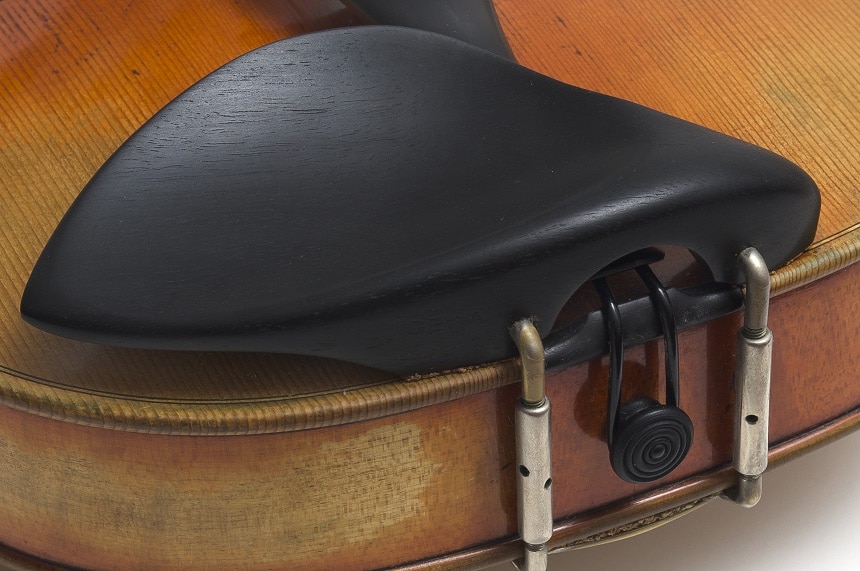
The quality of the chin rest is also reflective of the quality of the rest of the instrument. As such, having a plastic chin rest is indicative of a beginner violin. That said, the chin rest is just like the pegs, whereby if it’s not made of plastic, it features ebony, boxwood, or rosewood construction.
Ultimately the options you can pick will likely be dictated by the money you have set aside for the instrument. If you have between $100 and $800, you’ll likely end up with a beginner instrument. Alternatively, if you have thousands of dollars, you can buy a professional-level violin.
You should know that the violin’s sound gets better the more it’s played and the longer it lasts. As such, the most expensive options are from the 18th century and will typically produce the best sound if they are undamaged. That said, you can still get a new violin and play it in. If it’s the right quality and you play it for long enough, it may even appreciate in value.
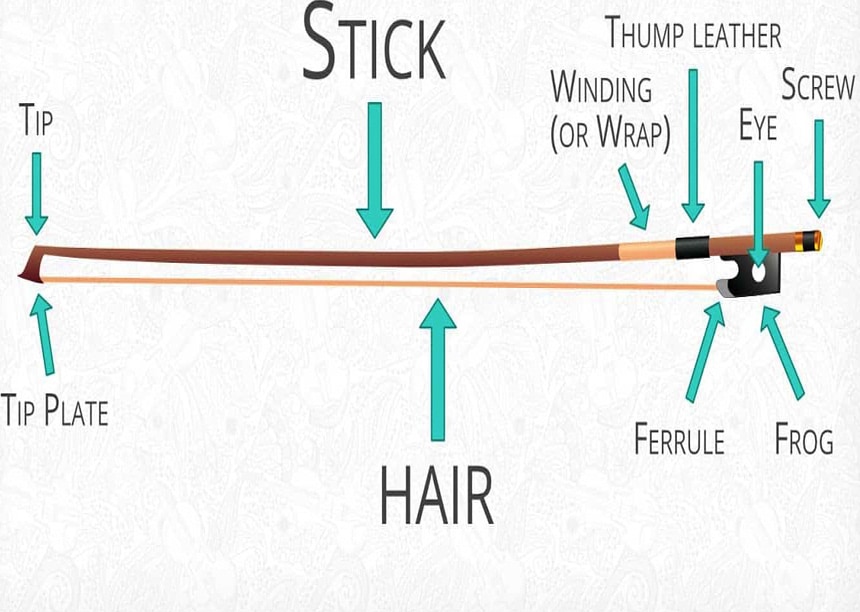
Of course, you’re not going to get the best out of the violin if the quality of your bow is subpar. If you’re wondering how to choose a violin bow, the first thing you look at is the construction. If it is anything other than genuine horsehair, then that bow should be avoided.
Additionally, you should check the quality of the stick, which should also be straight. Follow up by seeing if the bow is well balanced. It should neither be too heavy nor too light. The way the bow flexes when played should also be balanced.
According to reviews, the Vio Music#709 4/4 Violin Bow is one of the benchmarks for a quality violin bow. As per requirements, it’s fashioned from White Mongolian horsehair, while the stick is made from Snakewood.
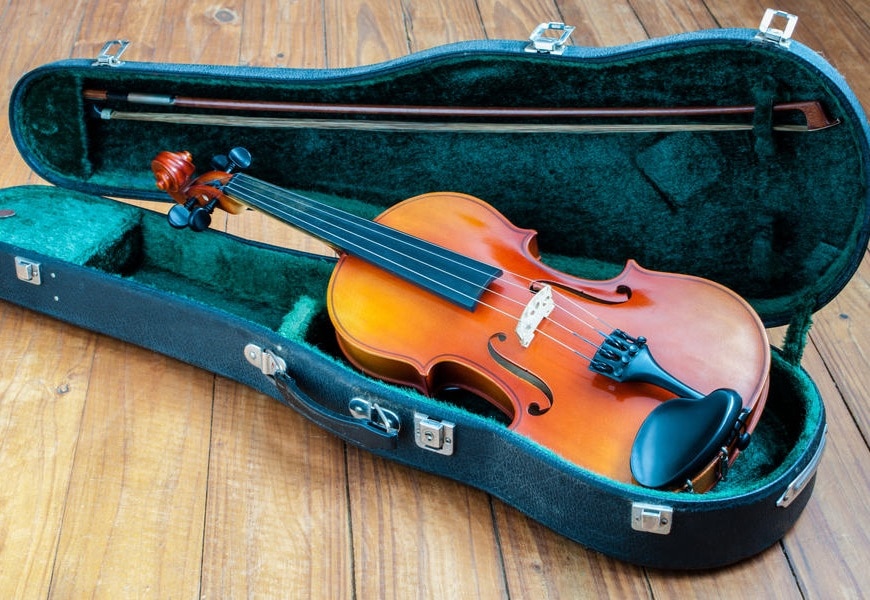
Owing to the nature of the investment, it’s only right to want to protect your violin, which is why you should know how to choose a violin case. It offers protection from damage while transporting the instrument. Consequently, just like the violin, it needs to be made from quality materials. Ideally, the exterior should be quite hard. That way, even if it’s hit on the outside, the impact doesn’t reach the violin.
Some of the options available are made from carbon fiber, compacted foam, or wood. While a fabric-based carrying bag is cheaper and lighter. It won’t offer any protection to your violin and hence should be avoided.
Also, check the padding inside the hard carrying case. If you use a hard case with no padding, then the violin could still get damaged due to impacts between the case and the violin. Padding acts to hold the violin in place as well as to provide insulation from impact. Worth noting is that the padding should also conform to the shape and size of your violin so that the fit can be snug.
Slots for your bow and other extra accessories are also important. Notably, these extra slots can house thermometers, hygrometers, and humidifiers in case you need them to take better care of your violin.
According to reviewers, the Aileen Violin Hard Case is an excellent example of a high-quality violin case. It features space for two bows and other accessories in addition to the violin. Also, it features a built-in hygrometer so you can monitor the moisture levels in the case. That way you can take better care of the violin’s shape and sound.
Even with the many confusing options in the market, it’s still possible to pick out a high-quality violin to match your budget. Whether you’re learning how to choose a violin so you can buy a present for a beginner, intermediate user, or yourself, the information above should prove helpful. You can also follow up and ask questions in the comments section below if you have additional queries.